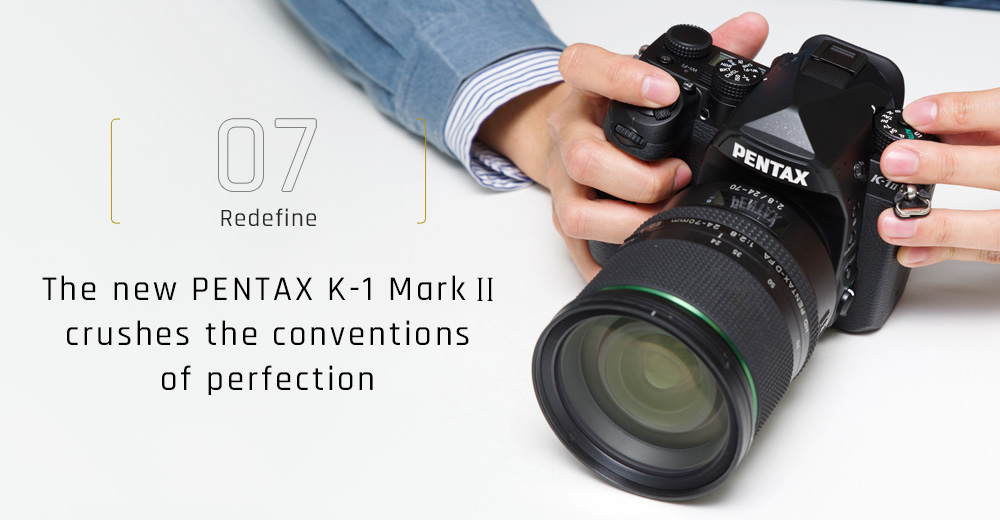
Using higher sensitivities in photography means greater noise. One of the most important tasks in a camera’s imaging process is optimizing both resolution and sensitivity by effectively processing that noise.
PENTAX engineers are always working toward the realization of images that are rich in detail and gradation; achieving this goal often means valuing sensory evaluations over numerical evaluations. The ideal solution was reflected in the PENTAX K-1, our first 35mm full-frame digital SLR camera. Following the launch of the K-1, a new accelerator unit that further improved image quality was incorporated in two APS-C-format digital SLR models, PENTAX K-70 and KP. It was this development that inspired PENTAX engineers to further upgrade the full-frame PENTAX K-1.

Resolution and sensitivity raised to a new level
Based on the knowledge and data obtained through the development of the PENTAX K-70 and KP, we knew that we could upgrade image quality in the PENTAX K-1 by coupling an accelerator unit with the PRIME imaging engine. It was more complicated than simply adding the accelerator unit, however. To keep with PENTAX’s standards for imaging, everything had to be rebuilt from the ground up after combining the PRIME engine and the accelerator unit with the 35mm full-frame sensor. The effort required to achieve our goal of exceeding the PENTAX K-1’s already exceptional image quality was harder and more intense that was initially imagined.
First was a repeated process designed to find the optimum combination of numerous factors, including the bokeh (defocus) effect, color reproduction, resolution and noise. Dramatic changes of the image as the sensitivity level was adjusted step by step would not be acceptable. PENTAX demanded the seamless reproduction of high-quality images at all sensitivities, regardless of the subject or scene. The goal was to provide images that are clearly superior, from the lowest sensitivity to the highest.
Realizing the ideal imaging concept included extremely detailed activities, because PENTAX places as much importance on the human perception of beauty as the company does in numerical evaluations. This resulted in a number of improvements for the PENTAX K-1 Mark II. For instance, there was a change in the quality of noise. Since the noise was identified more precisely than previously, it could be detected more clearly. The imaging concept which PENTAX has always pursued is evident in processes such as this.
Other improvements during shooting include improved resolution, more faithful color reproduction at higher sensitivities, and overall noise reduction. Since the camera lets the photographer set a sensitivity higher than standard, it expands the possibilities for a field camera throughout a wider range of applications: landscapes previously impossible to capture in handheld photography, or action scenes made possible only by varying the shutter speed. Video recording and the quality of live-view images also benefit. Image quality has been improved to a level where sensitivity as high as ISO 12800 can regularly be used. This expands a range of applications for the TAv mode, which allows the photographer to set the desired aperture and shutter speed, while shifting the sensitivity to control the exposure level of the subject.


Taking pride in expanding the creative possibilities
At PENTAX, we take pride not only in numerical and technological achievements such as a high signal-to-noise ratio and super-high ISO 819200 sensitivity, but also in the new creative possibilities these achievements can provide to our users. This is what PENTAX engineers — people dedicated to achieving the optimum image-quality standards called for by PENTAX’s imaging scheme — hoped for in developing the PENTAX K-1 Mark II.
The PENTAX K-1 Mark II embodies progress in every detail. We hope that users will discover all of these, one by one, during their shooting. The PENTAX product development team always looks to the future, and welcomes the new challenges that lie ahead.












